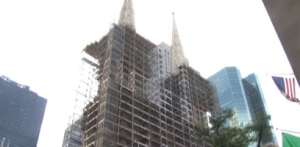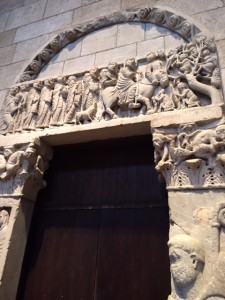This past weekend I braved the Thanksgiving travelers and cold temperatures of New York City. As you can imagine, the town is adorned with glowing lights and towering Christmas trees. It was a beautiful sight and the holiday spirit was truly in the air.
Our New York hotel was located right beside St. Patrick’s Cathedral. As I walked by everyday, I could not help but notice there was a lot of construction around the exterior of the Church. I, of course, did a little research to see if the stone was being restored. As it turns out, the interior marble surfaces had darkened over time due to soot, pollution and years of traffic in some places. Some interior marble surfaces and columns have been cleaned and deep stains removed by poultice.
The exterior spires have also been cleaned as well and stone has been re-cut to fill in the missing areas.
Continuing on with my whirlwind New York weekend, I made my way to the museums. This trip to New York, we decided to go to the Cloisters Museum, part of the Metropolitan Museum of Art located near the Hudson River. A little outside the hustle and bustle of the city stands this mighty structure filled with artifacts from Churches around the world. Me being in the stone business, I noticed the elaborate uses of marble throughout the Cloisters Museum. Here were a couple of my favorite marble structures:
The Doorway from the Church of San Leonardo al Frigido
This carefully chiseled archway is made of Carrara marble. The marble is carved to show scenes of the Annunciation as well as the Visitation of the Holy Mother. St. Leonardo of Noblat, the patron saint of prisoners is on the right side and on the support above, Jesus is featured entering Jerusalem, a symbolic scene as this church was located on a road that many pilgrims traveled through Italy en route to the Holy Land. The marble was carved in the workshop of Biduinus during the Crusader era.
Romanesque style Marble Fountain
This intricate fountain seems antiquated, but it was in fact created in the late 19th, early 20th century, acquired from the monastery of Notre-Dame-du-Vilar. I love the decorative forms of the Pyrenees and the color of the marble.
From churches of antiquity to modern day marvelous Churches, marble is everywhere and should be admired. Tune in next week because I will delve into how one piece of church history is being restored, the Tomb Effigy of Jean d’Alluye.




